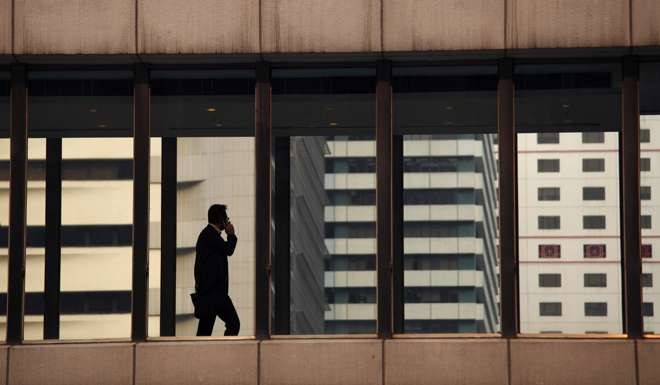
Microtransport for everyone makes sound economic sense
Hong Kong needs more bridges, walkways, escalators, lifts and travelators, not for a few disabled, but for the majority who are abled
A rugby player crashes against his opponent. Unlike the players at the Fat Boy Tens tournament last weekend, he is legless. A jubilant runner is led off the track – by the hand. A swimmer sways unsteadily to the starting block but is as elegant as a fish in water.
Disabled athletes, in their own way, are proving themselves to be as faster, higher and stronger as the Olympic Champions of the summer.
Tang Wai-lok brought home a swimming gold and a Paralympic record for Hong Kong (hurray!). China leads the medals table and Paralympic athletes are heroes, bagging victories by the podium-full.
Ten years ago, disabled people in China were locked away as their families felt they had done something wrong.
It only takes a broken leg, a dislocated hip, or plain old age to realise just how badly Hong Kong is set up for disabled people. Apart from the main taxi entrance, it is almost impossible to get to the Airport Express without negotiating stairs.
It only takes a broken leg, a dislocated hip, or plain old age to realise just how badly Hong Kong is set up for disabled people
A token stair lift exists on the bridge near the General Post Office but looks as if it is never used. In China, alongside each row of stairs is a ramp, perfect for wheeling a bag – or wheelchair up the slope.
Most buildings in Hong Kong have two or three steps up to the entry door. We know that the engineers of the 1970s and 1980s used them to stop water ingress during heavy rain; but in 2016, there must be a better way.
The MTR was designed “for Mass Transit” and the response from their management used to be, “if you are disabled, then go elsewhere”. It really was!
There are few escalators to street level (unlike Beijing and Singapore). The MTR is slowly retrofitting the slowest and most inadequate lifts in the world at enormous expense as it is recognised that this ignoramus attitude is as outdated as my passport photo.
In any case, most of the lifts are inaccessible if you are on the wrong side of the street. One of the newest stations, the University of Hong Kong, requires a 200-metre walk just to reach the lift.
Some may say that improving disabled access benefits a tiny minority at the expense of the majority. It takes a quick look at our population distribution to burst that Neanderthal thought.

How many more hip, back, knee and ankle problems will be diagnosed across the population? How many more will have to decide between a long and painful walk, an overly steep row of steps, or six lanes of fast moving driverless car traffic?
Unfortunately there is no app that will provide more escalators, bridges with lifts and escalators, and travelator-lined tunnels – they will have to be built. And it makes real economic sense to do so. It is not only the disabled who think, “I can’t be bothered to walk down three flights of steps to reach an underpass”. It is the busy consumer with money jangling in their pockets.
There is no app that will provide more escalators, bridges with lifts and escalators, and travelator-lined tunnels – they will have to be built. And it makes real economic sense to do so
Hong Kong’s pedestrian bridges have been a winner, allowing users unimpeded, all-weather, air-conditioned access across town (with steps). It has also provided an extra level of top grade retail space. The Mid Levels escalator is a real success story; opening up the whole cool SoHo area, spoilt only by the fact that it only goes one way, so it’s not for the disabled. In Monaco, tunnels built into the mountain lead to lifts that take the public to different points uphill.
Escalators are very cheap – the Sai Ying Pun escalator cost the same as a decent Robinson Road flat; the Mid-Levels escalator cost as much as a sea-view duplex. A few buildings like Man Yee, Hopewell Centre and the Centrium have lifts and escalators that opens up different levels to retail therapy.
It is so obvious that you wonder why the king of Lan Kwai Fong nightlife, Alan Zeman, hasn’t built an escalator from Queen’s Road to Wyndham Street? Improving accessibility is good for business.
Microtransport is the answer to city living for the ageing. Hong Kong needs more bridges, more walkways, more escalators, more lifts and more travelators, not for a few disabled – but for the majority who are abled.
Richard Harris is chief executive of Port Shelter Investment Management.

